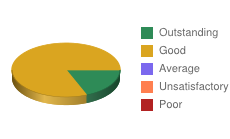How Do You Use AI Day to Day? Research, Drafting, and Automation Ideas
You probably find yourself juggling research, endless drafts, and routine tasks almost every day. With AI, you can cut through the noise—gathering information quicker, refining your writing effortlessly, and letting automation handle tedious work. It’s not just about saving time, though. There are smarter ways you could use these tools to sharpen your workflow and focus on what really matters. Curious about what that looks like in practice?
The Daily Impact of AI on Productivity
AI technology is increasingly integrated into daily routines, delivering notable efficiencies. Tools like ChatGPT and Microsoft Copilot allow users to automate various tasks, such as scheduling meetings and managing emails. This automation can free up time for employees, enabling them to redirect their efforts towards more creative and strategic activities, which may enhance overall productivity.
Additionally, AI's application in data analysis can streamline decision-making processes. By providing insights more quickly and accurately than manual methods, AI can contribute to more informed choices in professional settings.
As AI technologies continue to advance, ongoing improvements in efficiency and workflow management are anticipated, further enabling users to focus on key responsibilities while optimizing their workday.
Streamlining Research With Artificial Intelligence
Research has traditionally required considerable time and meticulous attention to detail. The integration of artificial intelligence (AI) into the research process has introduced notable efficiencies. AI tools can automate tasks such as data entry, information gathering, and summarizing findings from a vast array of sources in a fraction of the time previously required.
For instance, platforms like ChatGPT can assist in generating concise summaries and offer potential directions for further inquiry based on specific research questions. Additionally, machine learning algorithms can enhance literature reviews by identifying relevant academic papers, thereby facilitating the discovery of new insights.
The application of research automation allows researchers to allocate less time to data collection and more time to high-value analytical tasks. This shift can transform complex research activities into more manageable and focused steps, supporting a more efficient research workflow.
These advancements in AI provide researchers with tools that can enhance productivity and effectiveness in their work.
Enhancing Drafting and Writing Tasks Using AI
As artificial intelligence (AI) advances, it's significantly influencing research methodologies and writing practices. AI-powered writing assistants, such as ChatGPT, can aid in drafting by generating ideas, summaries, and structured text. This technology allows for a more efficient approach to content creation by streamlining the initial drafting phase.
Furthermore, tools like Grammarly provide real-time feedback, which helps writers maintain accuracy in grammar and consistency in tone throughout their work. In addition, research automation tools facilitate the rapid collection of relevant resources, enabling more effective time management.
AI also assists in organizing thoughts by supporting the development of clear outlines, thereby enhancing the coherence of written pieces. These advantages result in faster drafting processes, allowing writers to focus more on revision and refinement, which are critical for producing high-quality content.
Automating Everyday Repetitive Tasks
In the context of modern work environments, automating everyday repetitive tasks through artificial intelligence can significantly enhance productivity. Automation of routine tasks, such as email management or organizing meeting notes, can lead to time savings and reduce the need for manual input.
Various tools are available that facilitate this automation. For instance, platforms like Zapier and Make enable users to set up workflows that automate specific tasks, such as generating customer support responses or tracking interactions for analysis.
Additionally, AI applications like Otter.ai can automatically capture and summarize meeting notes, allowing professionals to concentrate on decision-making rather than documentation.
By implementing these automation solutions, organizations can delegate repetitive duties to technology, thus allowing employees to devote more time to projects that require critical thinking and creativity. This approach not only enhances productivity but also mitigates mental fatigue, helping maintain the overall quality of work output.
The evidence supports the notion that efficient task automation can lead to improved operational effectiveness in various professional settings.
Exploring Types of AI Agents and Their Capabilities
Understanding the various types of AI agents is crucial for effectively automating complex tasks. Each type of AI agent has unique capabilities that can be leveraged depending on specific operational requirements.
For instance, model-based reflex agents utilize internal models to inform their decision-making processes, allowing for more nuanced responses compared to simpler agents. In contrast, goal-based agents are designed to achieve designated objectives, which can be particularly effective in structured environments where outcomes are clearly defined.
Hierarchical agents present another level of sophistication by coordinating multiple autonomous systems. This enables them to manage complex tasks with minimal human intervention, which can be beneficial in dynamic settings where multiple variables are at play.
Utility-based agents offer a pragmatic approach by optimizing factors such as time, cost, and resource usage, which can lead to significant productivity improvements.
Real-World Examples of AI Tools in Action
AI tools have increasingly become integrated into everyday activities, enhancing efficiency in various tasks through real-time data and automation. For instance, AI applications in scheduling can optimize meeting times by analyzing calendar availability, thereby improving time management.
Inventory management systems utilize AI to monitor stock levels in real time, enabling businesses to respond quickly to supply needs.
Furthermore, platforms like Google Sheets can connect to automation tools, allowing for the automatic generation of reports, which streamlines decision-making processes. AI can assist with drafting outlines or compiling research, and voice command functionalities enable users to set reminders hands-free.
Practical Tips for Implementing AI in Your Workflow
As AI tools increasingly become integral to organizational operations, it's important to consider ways to incorporate these technologies into your own workflow.
Begin by methodically documenting your current processes to identify repetitive tasks that can be automated, thereby enhancing productivity.
Utilize AI-driven tools for research; for example, applications like ChatGPT can assist in summarizing articles and expediting the drafting of documents.
Automated meeting note-taking services, such as Otter.ai, can help capture key discussion points, allowing participants to concentrate on the dialogue rather than on note-taking.
Additionally, platforms like Zapier can connect various applications to automate repetitive tasks, such as managing emails or sending notifications.
It's advisable to integrate AI solutions that facilitate decision-making and planning, ensuring that each tool employed contributes positively to your workflow and offers measurable time-saving advantages.
Future Developments in AI-Driven Daily Automation
AI technology has made significant strides in automating routine tasks, and ongoing developments are expected to enhance the efficacy and accessibility of daily automation tools.
Future AI tools are anticipated to incorporate advanced personalization features, enabling them to learn and adapt to individual user habits and preferences over time.
Natural language processing is likely to play a pivotal role in facilitating user interaction with these tools, allowing individuals to create customizable workflows by simply articulating their automation needs.
Additionally, improvements in multi-agent systems may enable better task management across various platforms, potentially leading to a more integrated and efficient routine.
Proactive AI agents are also being developed to function with increased autonomy, managing scheduling and organization tasks without requiring user prompts.
These innovations are set to transform work processes, allowing users to automate more complex daily activities effectively.
As these technologies mature, it's crucial to assess their implications for productivity and user satisfaction in both personal and professional contexts.
Conclusion
Embracing AI in your daily routine isn’t just about keeping up—it’s about working smarter. You can streamline research, write with greater clarity, and automate those tedious tasks that slow you down. With the right AI tools, you’re empowered to focus on big-picture projects and meaningful insights. As AI continues to evolve, you’ll discover even more ways to boost productivity and creativity. Start small, experiment, and let AI transform the way you work every single day.




